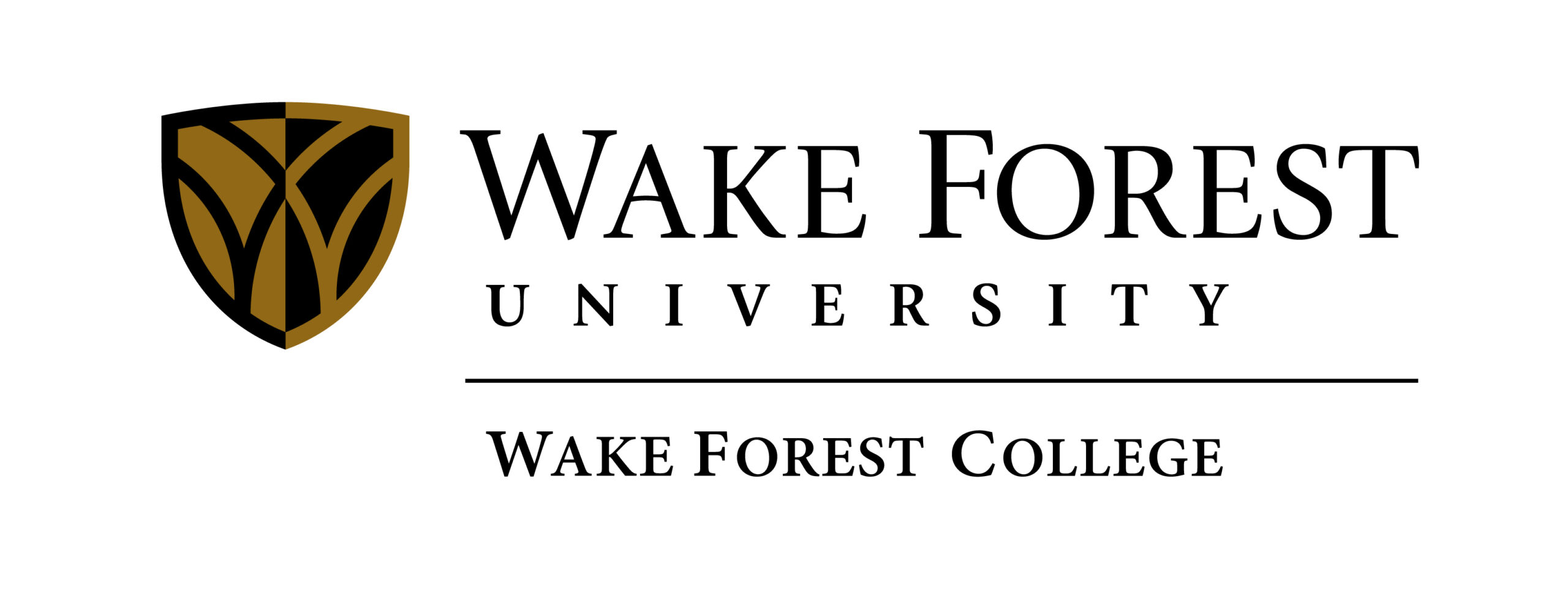Teacher-Scholar Legacies: Leigh Ann Hallberg
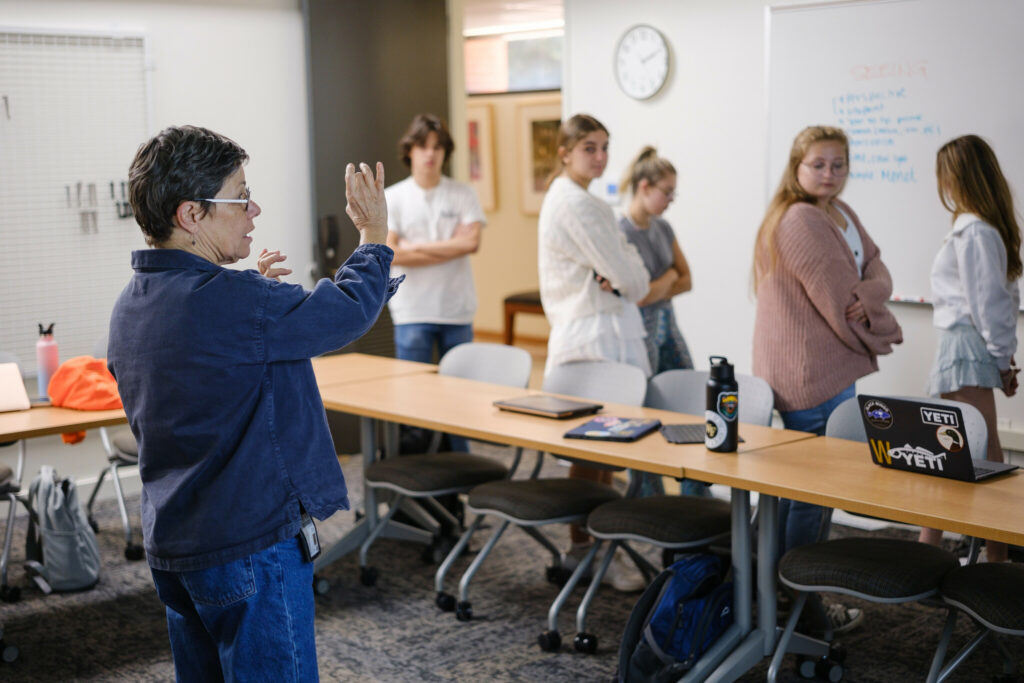
By Jennifer Gentry, Teaching Professor of Art
Leigh Ann Hallberg’s approaches to teaching have transformed students’ lives over her distinguished 26-year career at Wake Forest University, helping them see the world — and themselves — in new ways. Former student Yan Cheng (’19) describes her teaching philosophy: “Leigh Ann is never just a professor for me; she is a companion in the world of art… She didn’t teach in the traditional sense, because art… isn’t something to be taught. It’s something to be explored. And that’s what she gave her students: the space.”
This philosophy of creating room for discovery comes alive in both formal classes and impromptu moments. At a Major/Minor Fair, noticing a student approach the Art Department table with visible trepidation, Leigh Ann immediately walked around to the student’s side. She sat cross-legged on the floor and invited the student to join her. There, away from the commotion yet in plain sight, they discussed majors, parental expectations, and the student’s hopes. This gesture of “meeting a student where they were” reflected her approach: creating spaces where students feel safe to explore, take risks, and grow.
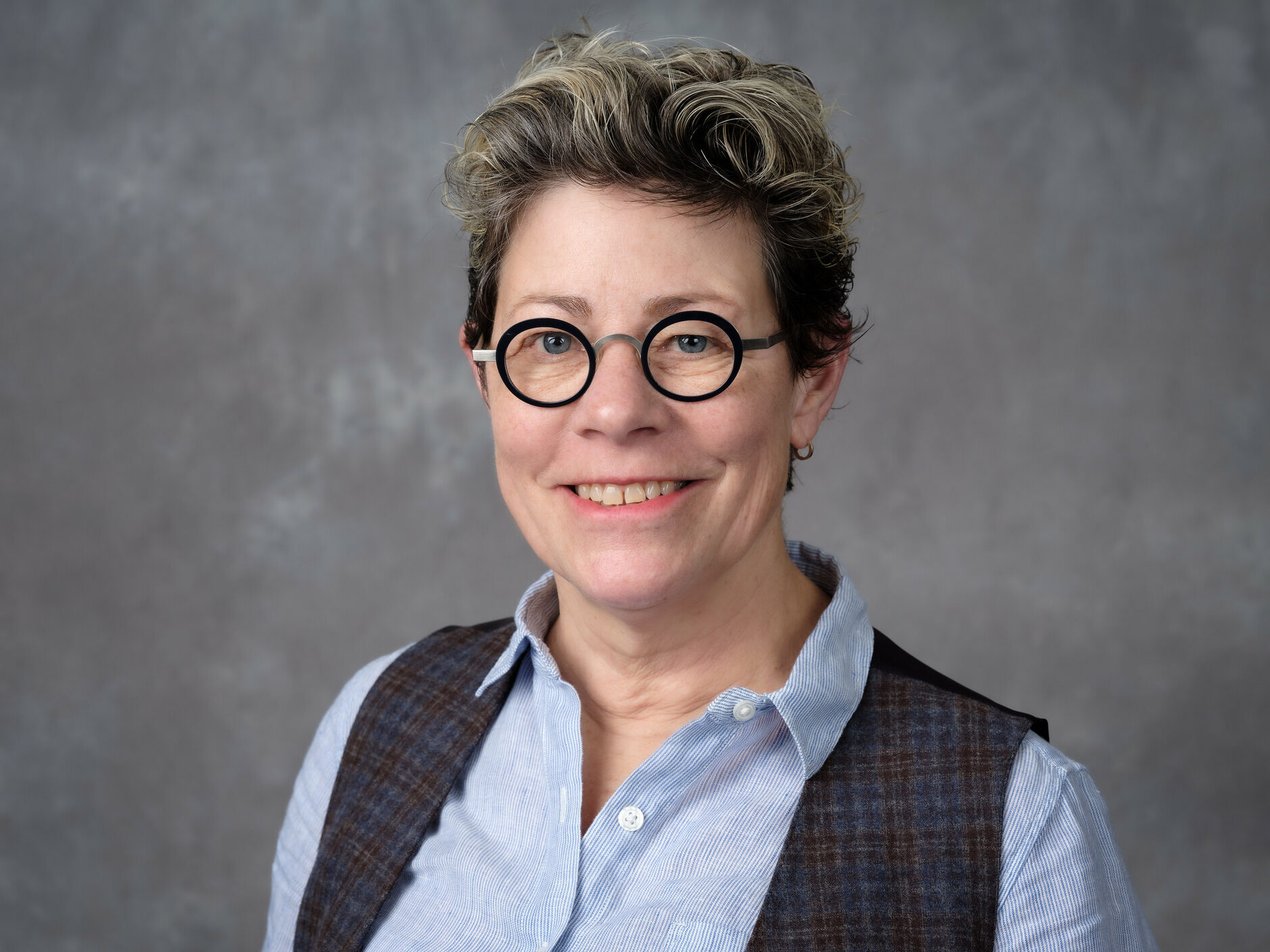
Since joining Wake Forest in 1999, Leigh Ann has taught all levels of drawing, as well as studio fundamentals, sculpture, and the unique First Year Seminar “Discovering the Avant-Garde.” She recognized the importance of teaching the First Year Seminar, which reflected her commitment to students’ formative experiences, university values, and the art department’s outreach. She consistently leveraged the university’s art collection as a vital teaching tool, using it extensively in both seminar and drawing classes. She cultivated environments where students developed technical skills alongside personal artistic voices, balancing high expectations with nurturing support. Nick Provosty (’24) explains, “One of her greatest qualities is her dedication to taking her students and their work seriously… she never backed away from giving me an honest critique… I will forever be grateful to her for not accepting what I was giving her but pushing me to become what she saw that I could be.”
A Legacy of Transformation
The impact of Leigh Ann’s teaching resonates in students’ careers and creative confidence. Brittany Bordeaux (’12), now working at the National Gallery of Art, credits Leigh Ann and her colleagues with helping her pursue her dream career, calling her “A real light of artistic passion and honesty.” Bordeaux elaborated, “Your dedication to connecting students and alumni in the arts has opened so many doors, helping us see ourselves in creative fields we might not have imagined… You helped so many of us believe in our potential.” In Leigh Ann’s First Year Seminar, she recognized Lynn Huffard’s (’21) aptitude with the observation: “We have an art historian on our hands” — a moment Huffard later noted was instrumental in her decision to pursue art history.
Leigh Ann has been instrumental in connecting students with opportunities. She helped Yan Cheng secure an internship at David Zwirner Gallery. Emma Hunsinger (’13), now a cartoonist for The New Yorker, called her a “champion,” appreciating the encouragement “to keep making art and keep making silly art.” Her influence extends widely — Mitchell Anderson (’07) counts her among his valued teachers two decades after graduating, despite never taking one of her classes.
Students often speak of Leigh Ann in familial terms. Sophie Heldt (’21) calls Leigh Ann her “Wake Forest Mom.” Sophie shares a transformational moment during her First Year Seminar. As the class studied Manet’s “Olympia,” Leigh Ann exclaimed, “Look at that hand! What a hand!” Years later, as Sophie stood before the actual painting at the Musée d’Orsay, her first thought was, “Wow. Look at that hand.” Sophie credits Leigh Ann with teaching her “to enjoy every last detail.” Leigh Ann’s ability to help students truly see the world around them appears frequently in testimonials.
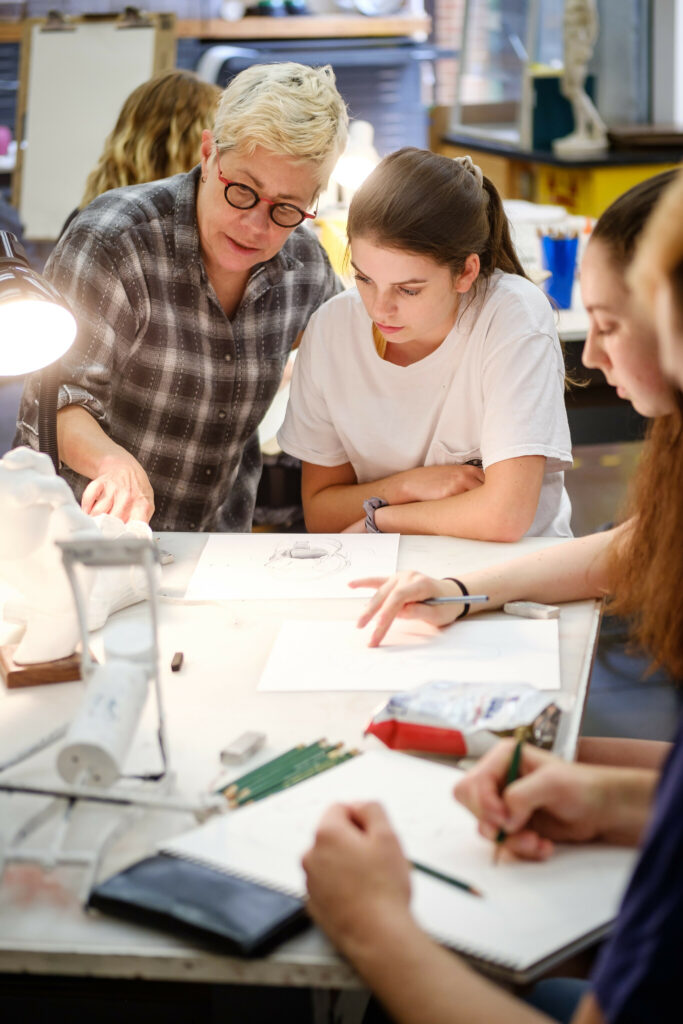
Art as Life: The Inseparable Nature of Making and Teaching
For Leigh Ann, the act of making art has always been inseparable from teaching it — a conviction that has defined her approach throughout her career. Her belief that authentic teaching emerges from active engagement with one’s discipline manifested in a vibrant studio practice alongside her teaching practice. Her prolific creative practice (MFA, University of Colorado Boulder; BA, Mount Union College, Magna Cum Laude) spans multiple media, including drawing, painting, sculpture, and installation. Her extensive exhibition record includes over 25 exhibitions, with 15 solo shows featured at prestigious institutions nationally and internationally, among them Reynolda House Museum of American Art, Southeastern Center for Contemporary Art, the Green Hill Center for North Carolina Art, and galleries in Germany and Switzerland, as well as regional and national museums in Italy.
Leigh Ann has received numerous awards recognizing her work, including the Hoak Family Faculty Endowment Award (2022), multiple grants and fellowships, and artist residencies. Reynolda House Museum of American Art is currently featuring her “Phenoms” exhibition, which runs from September 2024 through October 2025.
A Lasting Impact
Leigh Ann has been a pillar of service both within and beyond the department. Her dedication often involved quiet, persistent work strengthening the arts program and its community connections. She has tirelessly advocated for the essential role of teaching professionals in the university ecosystem. She has enriched Wake Forest through interdisciplinary collaborations, such as co-teaching an Art and Business course, developing object-based learning projects with the Lam Museum of Anthropology, and collaborating with Dance faculty and students on dynamic life drawing projects. During the SoundSeen exhibition, Anthony Braxton’s musicians performed, dancers moved, and Leigh Ann’s students created live Matisse-inspired cut-outs in the Hanes Gallery. She consistently engaged with visiting artists and departmental programming, encouraging students to embrace these opportunities as essential to their education. She also focused on building and sustaining community connections, linking students and alumni. Her contributions are honored by the establishment of the Leigh Ann Hallberg-Metz Family Fund for Excellence in the Arts, an endowed departmental fund that supports innovation and collaboration between studio art and art history students.
Leigh Ann has been deeply engaged with Wake Forest’s distinctive Student Union Art Acquisition program, which enables students to travel to New York every four years to purchase contemporary art for the university’s permanent collection. As a faculty advisor for multiple student cohorts, she has guided them through gallery visits and acquisition decisions while ensuring the learning experience remained student-driven. Through this program, students gain valuable experience evaluating art, navigating the professional gallery world, and significantly contributing to the University’s cultural heritage.
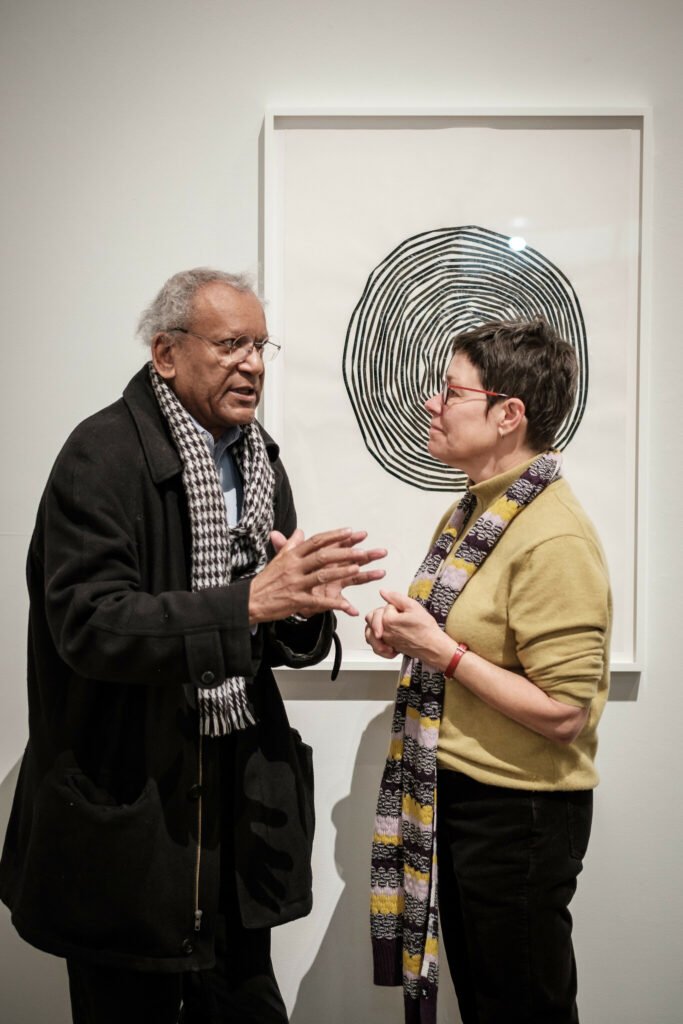
Throughout her time at Wake Forest, Leigh Ann has been a driving force behind dozens of student exhibitions at the stArt gallery, the Wake Forest student art gallery, and other community venues. These opportunities allowed students to experience the professional aspects of publicly presenting their work while building community connections.
Marcus Keely (’10), who journeyed from student to colleague to friend, emphasizes what has distinguished Leigh Ann: “her deep, sincere, unwavering care and concern for both her work and her people… Leigh Ann is the ultimate nurturer – drawing from what miraculously seems like an inexhaustible well of energy and love to help others grow, develop, and succeed in the classroom and in life.”
As Leigh Ann prepares for retirement in Spring 2025, her colleagues and students recognize her contribution. Nick Provosty describes her impact: “For myself and many others, Leigh Ann Hallberg took this ember [of artistic passion] and turned it into a fire… She challenged, studied, and fed the fire. She can’t keep it alive for you forever, but she showed you how to.”
Her approach to teaching art has transcended technical instruction to become a philosophy about engaging with the world — with curiosity, empathy, and a willingness to take risks. Through her mentorship, students learned not just to look but to see, not just to create but to express, and not just to study art but to live artfully. Leigh Ann Hallberg’s legacy, as Professor Morna O’Neill states, is “a forest of talent and passion that will continue to flourish for generations to come.”

